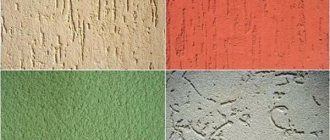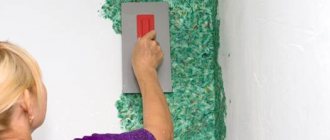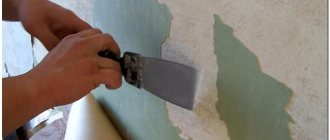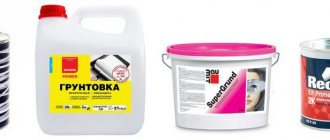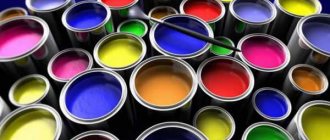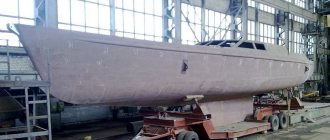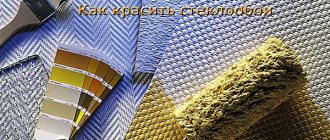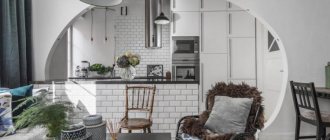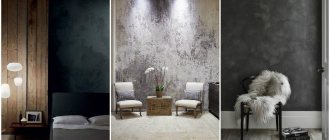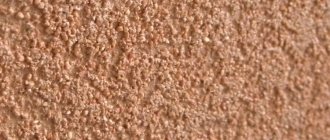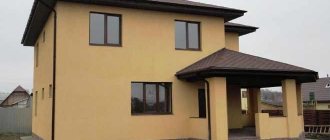Icer
18096 0 25
Icer January 16, 2017Specialization: master in the construction of plasterboard structures, finishing work and laying floor coverings. Installation of door and window units, finishing of facades, installation of electrical, plumbing and heating - I can give detailed advice on all types of work.
In the photo: liquid wallpaper cannot be applied without a primer
Did you know that a primer for liquid wallpaper must be applied without fail? Any violations lead to the fact that the composition may peel off in certain areas or a dark base can be seen from under the coating. To prevent this from happening, simply use the recommendations outlined in this review.
The process of applying primer is simple, but there are a lot of nuances without which it is impossible to prepare the walls well
Liquid wallpaper fits well only on properly treated walls
What is liquid wallpaper
The material for applying liquid wallpaper is made from cellulose fibers, dyes and other modifying additives.
The dry mixture has a sawdust-like structure.
The material is mixed with water immediately before application, following the manufacturer's recommendations.
When applied, it forms a durable, seamless surface that is resistant to mechanical stress.
To prevent peeling of the decorative coating, the walls under the liquid wallpaper must be primed.
Conclusion
Using the tips from this review, you can easily prepare walls or ceilings for the application of liquid wallpaper. To further understand the topic, watch the video in this article. If you still have any questions, write them in the comments below, together we will find the optimal solution for any problem.
Did you like the article? Subscribe to our Yandex.Zen channel
January 16, 2021
Decorative wall decoration, Wallpaper, Finishing materials, Walls, Construction Chemicals, Dry building mixtures
If you want to express gratitude, add a clarification or objection, or ask the author something, add a comment or say thank you!
Purpose of the primer
The application of primers is necessary for strong adhesion of the surface of walls and decorative finishing coatings.
Priming for liquid wallpaper performs the following tasks:
- increases the adhesion of the base and finish;
- ensures uniform application, uniformity and color matching of liquid wallpaper;
- prevents the formation of mold and mildew;
- strengthens and strengthens the foundation;
- improves appearance;
- increases the service life of the coating;
- evens out unevenness and roughness of the base for finishing;
The composition fills microcracks and pores, which helps to save liquid wallpaper and makes it easier to apply.
PVA glue instead of primer
Diluted PVA is good for priming walls
. Some people use PVA glue diluted with water in a ratio of 1:2 or with acrylic paint 1:3. This primer forms a film on the wall, allows you to save on purchasing a primer, and is suitable for covering the surface before gluing cheap paper wallpaper.
Disadvantages of primers based on PVA glue:
- does not penetrate into the base, therefore, its strength does not increase;
- does not have antibacterial and antifungal properties;
- over time it cracks and turns yellow;
- Peeling is possible under the weight of finishing materials.
Since liquid wallpaper is an expensive material, you should not skimp on purchasing a high-quality primer.
Choosing a primer
We select a primer for impregnating walls under liquid wallpaper, depending on the base material and the type of decorative compositions.
The service life and quality of the decorative coating depend on the correct choice of impregnation.
Primers for liquid wallpaper are available in different types:
- Acrylic. Suitable for processing cement and concrete surfaces, drywall, cinder blocks and bricks.
Penetrating deeply into the surface, they increase the strength, water resistance and durability of the coating, and improve the appearance. Prevents the formation of fungus and mold.
Deep penetration primers are suitable for hardening porous, highly absorbent surfaces.
Can be used in damp areas.
The active components of the mixture penetrate into the pores of the base, saturating and holding them together.
Acrylic impregnations are distinguished by their versatility and affordable price.
- Adhesive. Designed for treating dense concrete and cement surfaces that do not absorb moisture well. Impregnations create a rough layer that promotes good adhesion to the decorative coating.
The roughness of the soil is given by quartz sand, a small amount of which is found in the primer.
- Alkyd. Used for processing wooden bases. Not suitable for application on concrete and plaster.
- Water repellents. Deep penetration compositions intended for rooms with high humidity.
They have high water-repellent ability, strengthen the base and reduce the consumption of finishing materials. Resistant to alkalis and salts.
Prevents the penetration of dampness from walls and the environment. Suitable for impregnation of concrete, plaster, putty, fiberboard, chipboard, gypsum fiberboard.
There are special compositions designed for application under silk plaster. In terms of technical and operational characteristics, they do not differ from conventional primers, but in many ways they are superior in cost.
If possible, purchase a primer from the same manufacturer as the liquid wallpaper.
Manufacturers complete expensive decorative coating options with impregnations and liquid for diluting dry components.
On the packaging of decorative mixtures, the manufacturer gives recommendations for their preparation and indicates which primer is needed for application under a specific type of liquid wallpaper.
Advantages and disadvantages of application
Before applying liquid wallpaper, the surface must be primed. This is done because the mixtures used in such cases differ in the following features:
- increase the adhesion of liquid wallpaper to the surface;
- reduce the consumption of finishing material;
- form a crystalline mesh, which increases the service life of the wallpaper;
- speed up work on applying liquid wallpaper;
- form a moisture-proof layer;
- prevent destruction of the base;
- eliminate microcracks.
Among the disadvantages of primer mixtures are the following:
- due to increased viscosity, a number of mixtures take longer to dry, therefore increasing the period of finishing work;
- Due to improper preparation of the solution, noticeable stains may appear on the surface of the liquid wallpaper.
See also
Types of wood primers for varnish and rating of the best brands, application rules
It is recommended to buy primer mixtures of the same brand as liquid wallpaper. In this case, maximum adhesion and protection from negative factors are achieved.
Preparing the base
Preparing the surface for priming is a mandatory stage of finishing work.
We carry out the work in the following sequence:
- We remove the old decorative finish, remove the flaking areas of the plaster.
- We level the walls with a layer of plaster or putty.
- We open up the cracks and seal them with mortar.
- We coat the structures twice with an antiseptic solution to prevent the development of fungus and mold, if these components are not present in the primer you have chosen.
Necessary tools for work
To apply the primer you will need brushes or rollers. The first ones are used in the following cases:
- for treating hard-to-reach places, joints, narrow areas and surfaces adjacent to sockets and other functional openings;
- for applying concrete contact, since brushes capture quartz sand particles better than a roller.
To apply the primer, rollers made of foam rubber or with pile are used. Also, such mixtures can be sprayed over the surface using cartouche guns. This can be convenient when processing a large area is required.
Also, to prepare the surface for liquid wallpaper, it is recommended to purchase a container for mixing soil and other tools that may be required to clean the base.
Applying primer to various surfaces
Work on priming any bases must be carried out at low humidity and positive temperatures from 5 to 25 degrees.
If the temperature is too high, the primers dry quickly without being able to penetrate to a sufficient depth.
The technology for applying the primer depends on the base material and the choice of primer mixture composition.
When preparing a solution from a dry or concentrated mixture, follow the manufacturer's instructions.
Mix the ready-to-use mixture thoroughly until smooth.
Thorough mixing requires adhesive soil containing quartz filler, which settles to the bottom.
Pour the solution into a paint tray.
We cover the wall with an even layer of primer using a roller or brush, moving sequentially from top to bottom.
Apply the second layer of impregnation after the first has completely dried, but not earlier than after 4 hours. The drying time of a certain composition is indicated on the packaging. You can begin subsequent finishing no earlier than one day later.
Roller priming provides a more uniform layer and allows you to use impregnation more economically.
When treating dark bases or uneven color, it is better to paint the walls with water-based paint in white, or in the color of the decorative finish.
Painted walls
It is better to prime walls painted with water-based compounds with acrylic impregnations.
Surfaces painted with oil paint are treated with adhesive impregnations. They will give the surface roughness and improve the adhesion of the decorative coating to the base.
You must first clean the painted walls with light-grit sandpaper and degrease them.
It is better to apply impregnation with a roller, in two or three layers, following the manufacturer’s recommendations.
If there are unevenness, delamination and paint shedding on the surface, it is better to remove the old coating, re-plaster and putty.
Treatment of concrete and plastered walls
Concrete and plastered bases are impregnated in two approaches with a deep penetration primer, with an interval of at least 4 hours.
If the surface is too porous, peeling and crumbling, it is better to use bonding primers.
We repair base defects, cracks and unevenness with cement or gypsum mortar.
To ensure uniform color and uniform impregnation, we putty the walls with gypsum putty.
Apply two coats of primer evenly using a roller and brush.
You can additionally paint the walls with water-dispersion or acrylic paint.
Plasterboard walls
You can apply liquid wallpaper to drywall after completing all the technological steps:
- surfaces of plasterboard sheets are primed twice to ensure adhesion;
- We fill in uneven spots and grooves from self-tapping screws with putty.
- We glue the joints of the sheets with sickle tape and then putty.
- Perform a continuous putty on the surface of the walls with a thin layer and let it dry.
- Cover the base with two or three layers of primer. In this case, apply the next layer after the previous one has completely dried.
Additional coloring
Primer compositions are transparent or lightly colored. If, after priming, the wall looks spotted or has a dark color, this will affect the appearance of the silk plaster after application, this is especially noticeable with a thin finishing layer. Therefore, after priming, the base is additionally painted.
For coloring, use paint of the same color as the mass of liquid wallpaper, or lighter. White paint will do. It is applied with a roller in two or three layers. Sometimes it is enough to apply only one layer if the paint is opaque. You can tint the paint yourself, or you can buy ready-made paint that is close to the desired color. After applying and drying the paint, the wall is primed 1-2 more times.
When preparing to cover the walls with silk plaster, do not forget to apply a primer for liquid wallpaper to them. This will save the amount of expensive mixture, as well as achieve strong adhesion of the liquid wallpaper coating to the wall material. After reviewing the information provided, you can easily navigate and select the primer composition needed for the specific conditions of your room when purchasing. If the product you need is not on sale, you can replace it with a similar one.
How to avoid possible mistakes?
Treat the plasterboard surface with a deep-impregnating agent to reduce the porosity of the material.
In order to prevent corrosion, the heads of the hardware are painted with a paint of a suitable shade.
Wood is best treated with a waterproofing primer mixture that prevents deformation and rotting. A shellac composition applied to a wood surface will prevent the appearance of resin on it and will hide differences in color shade under its layer.
